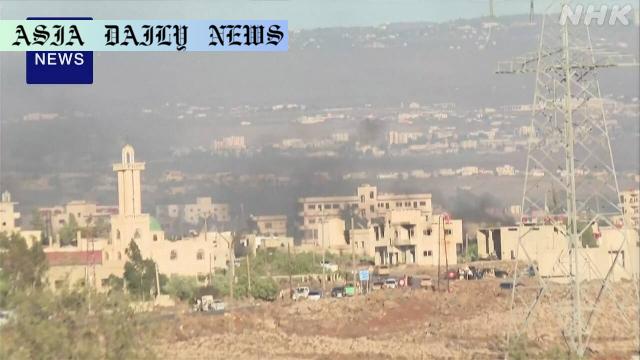Syria Clashes: Sectarian tensions between Bedouins and Druze in southern Syria result in over 1,000 fatalities since July 13.
- Sectarian clashes between Bedouins and the Druze in Syria’s southern region result in over 1,000 deaths.
- Humanitarian crisis escalates, marked by food, water, and supply shortages due to the ongoing violence.
- Israel intervenes with airstrikes to protect the Druze community amid the unrest.
- Syria’s interim government orders a ceasefire, but sporadic clashes persist in Sweida suburbs.

Introduction to The Crisis in Southern Syria
Southern Syria is reeling from violent sectarian clashes that have claimed over 1,000 lives, unleashing a severe humanitarian crisis. The ongoing tension primarily involves the Bedouin tribes and the Druze religious minority. Beginning in mid-July, this violence has been exacerbated by airstrikes from Israel and continued hostility despite ceasefire efforts introduced by Syria’s interim government.
Background to The Sectarian Conflict
The region has long harbored underlying tensions between its communities, but the violence took a feared turn on July 13, 2023. According to the UK-based Syrian Observatory for Human Rights, violent clashes and targeted executions have led to the deaths of over 1,000 individuals. Tragically, these figures include many women and children. Sweida city has emerged as the focal point of the crisis, sparking outrage and concern from humanitarian observers worldwide.
International Involvement and Israeli Airstrikes
The international dimension of the conflict became explicit when Israel launched airstrikes in southern Syria and Damascus, arguing its intervention was motivated by the need to protect the Druze community. This intervention has drawn mixed reactions globally, with some justifying it as a necessary protective measure while others view it as an aggravation of the conflict. The intensity and scope of these strikes have caused significant damage and added to the loss of life and instability in the region.
Humanitarian Consequences
The ensuing violence has resulted in a dire humanitarian crisis. Food shortages, lack of clean drinking water, and restricted access to basic supplies have compounded the suffering of those in Sweida and surrounding areas. A convoy carrying humanitarian aid was obstructed by a Druze-affiliated armed group, leaving much of the aid undistributed. While a few vehicles managed to deliver supplies, this represents only a fraction of the urgent needs on ground. This blockade further underscores the complexity and multifaceted nature of the conflict and its repercussions.
Ceasefire and Ongoing Tensions
Syria’s interim government has declared a ceasefire aimed at restoring stability. However, the relative peace was soon disrupted by sporadic clashes in the outskirts of Sweida city. While the situation could be a step toward ending the violence, the stubborn refusal of armed groups to observe the truce raises questions about the efficacy of the ceasefire.
Looking Ahead
The immediate future of southern Syria remains clouded in uncertainty. The need for international mediation is pressing, with increased accountability demanded for violations of humanitarian law. Additionally, rebuilding trust between local communities, addressing grievances, and ensuring safe humanitarian access should be prioritized to pave a way toward sustainable peace.



Commentary
Sectarian Clashes: A Grim Reminder of Syria’s Persistent Struggles
Syria’s southern clashes illuminate the fragility of regions already beset by existing sociopolitical challenges. The alarming death toll underscores how divisive identities can threaten to tear apart the very fabric of a nation. While the civil war thoroughly fractured Syria, sectarian violence is reigniting historical fault lines, impeding the potential for comprehensive reconciliation.
Humanitarian Crisis: An Immediate Concern
The tragic suffering of civilians stands out as the darkest aspect of this conflict. Women, children, and non-combatants have found themselves thrust into despair, facing a void of basic necessities such as food and clean water. The humanity of the region—often resilient amidst adversity—is now caught up in forces beyond their control. Meanwhile, obstructive armed groups deny aid, worsening this crisis. Humanitarian organizations must act decisively to ensure unrestricted access to these vulnerable populations.
The Role of External Actors
The Israeli airstrikes, underscoring both concern for regional minorities and geopolitical overtones, add complications to the crisis. While the justification of protecting the Druze holds some ground, the collateral damage may contribute to lingering bitterness and mistrust in local communities. Such interventions can inadvertently create ripples that extend far beyond their immediate intentions, affecting diplomatic relations.
Conclusion: A Path Forward
The fluctuating state of peace and continued violence in Sweida paints a grim outlook. However, all hope is not lost. International intervention, diplomatic dialogue, and peace-building at the community level hold the keys to resolving this crisis. The global community must shoulder its responsibility to prevent further loss of life and work towards rebuilding community cohesion in southern Syria.